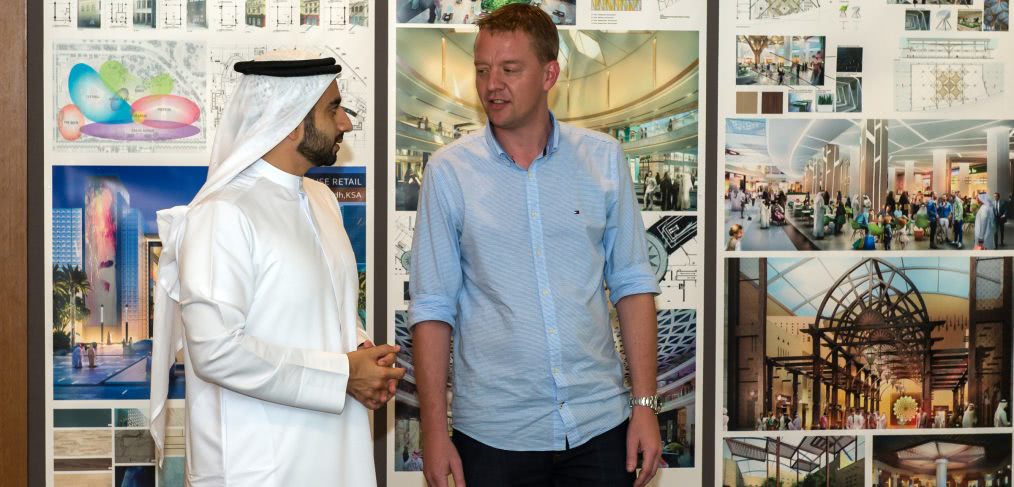
One Size Does NOT Fit All
CRTKL’s Bonnie Toland talks cultural diversity in workplace design.
Workplace design faces challenges and opportunities as multinational companies expand globally. Standards developed in US or European offices are often applied directly to international offices, but when these companies hire employees from diverse places, the same practices aren’t always successful. It would benefit companies, employees and designers to examine how office design privileges one way of thinking and working over others. This approach goes beyond a token photograph of a local monument; it explores how a space is organized, how the day is planned and how the interior environment relates to its surroundings.
When a company replicates its office model from London or Chicago globally, it communicates its preference and its cultural dominance. Other groups must adapt and, if it is challenging or uncomfortable for them to do so, their concerns are often dismissed. Most of these attitudes are not intentionally hurtful. Often they uncover Western values tied to perceptions of productivity and efficiency. But, as one Emirati client inquired, what if efficiency is not conducive to innovation?
Industrialization in the West meant the death of many behaviors, patterns and values. Perhaps, as the international work model spreads, we can find compromises and balances to maintain a rich diversity of thought and culture instead of the quick process of homogenization that we are witnessing. The Gulf region presents an exciting opportunity for a more intentional reconciliation between tradition and modernity. Design can simultaneously embrace and celebrate both. The region is moving fast, but developing a local language takes reflection, which requires time, observation, empathy and openness.
In part, due to the pressures of tight timelines and budgets, design in Dubai often falls into one of two categories: a full embrace of an international model without reference to the local or a romantic museumization of an imagined local. Neither allows for the integration of modernity and tradition, which could inspire a unique design language rooted in place and reflective of a complex local identity. The Dubai International Financial Center houses many multinational companies and is truly an international facility that could be relocated in the exact configuration to any country in the world. On the other extreme, Madinat Jumeirah beautifully reconstructs an imagined Arabic souk that provides a theme-park-like experience for visitors and locals alike. Both continue the myth of modernity and tradition as static and existing in isolation from each other.
One example of an office that embraces a local approach is ArchCorp, an architecture firm founded by an Iranian couple working from Dubai. Instead of greeting visitors in a meeting room with a conference table and chairs, they welcome them into a majlis, a formal living room. Traditionally, the majlis is the room of the home where important affairs are discussed. Seats are soft, and the ambiance is social and comfortable. It lacks the rigidity of the standard international business environment, and it works perfectly for conducting business in the Gulf region, where generosity and hospitality are prized traits. Just as in a home, the host offers refreshments, provides snacks and treats and makes the guest feel at ease in every way possible. This is the regional way of conducting business, where relationships and connections win over metrics and data.
A first step in creating workplaces that support regional customs is a familiarization with local cultural practices. This may seem obvious, but there is a surprising lack of depth on the part of international design firms in their exploration of regional specificities. It is certainly more efficient to apply the same approach to office design that is tried and true in the firm’s and designers’ country of origin.
Beyond the Gulf, many regions struggle with adapting to an international model. In Mediterranean countries, the lunch time meal has traditionally been the most important meal of the day, and yet, as the international work model has taken hold, the tradition has been largely abandoned. When allotted one hour for lunch, spending that time with family is not an option, and a traditional afternoon nap becomes an impossibility. People adapt, but at what cost? What is being lost and is the local tradition, practice or set of values worth accommodating?
We may not have the answer, but we can at least ask the questions. Concepts such as respect, time, formality, privacy, gender, the individual and the community all play into how we work and interact with space. Can the international office adapt, and is it worth trying?
